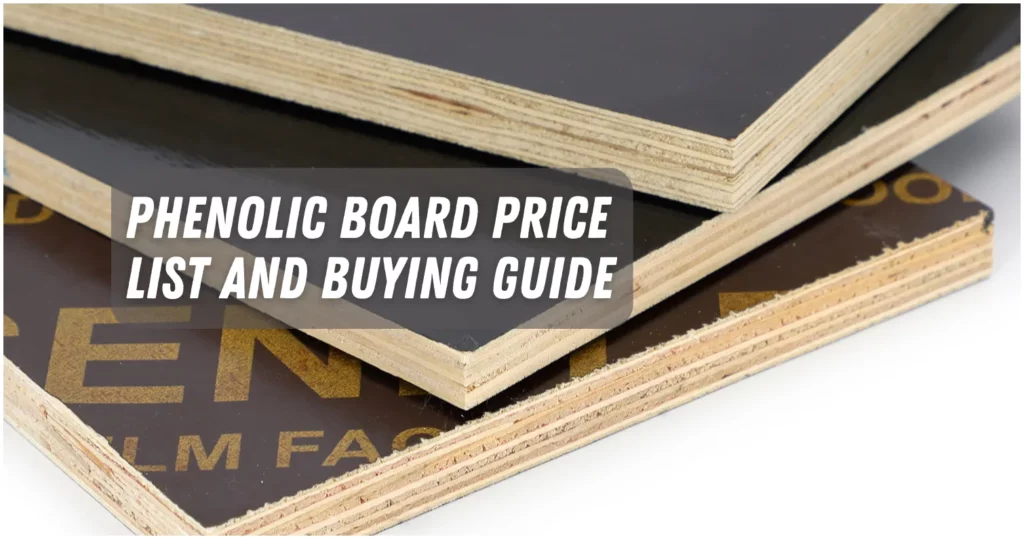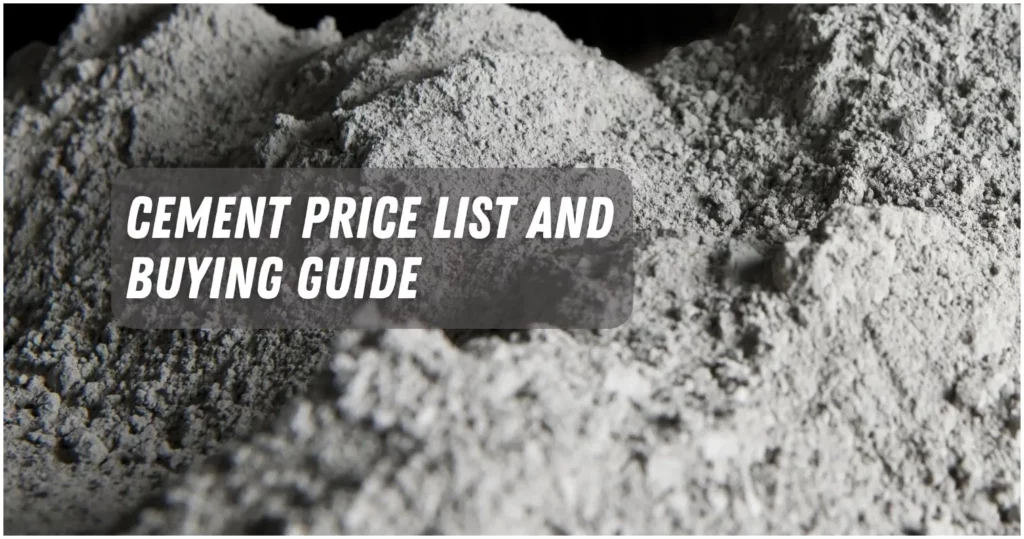Blended cement is a type of cement that used a lot in the Philippines because it is cheaper in price and better for the earth.
The price of this cement in the Philippines is between ₱191 and ₱227 per 40-kilogram bag.
In this piece, we will talk about the characteristics, uses, types, pros and cons, and price list of blended cement in the Philippines.
What is Blended Cement?

Blended cement is a hydraulic cement that is made by mixing Portland cement clinker with one or more SCMs and grinding them together.
Most of the time, it has two or more extra cementitious materials (SCMs) like fly ash, slag, silica fume, limestone, natural pozzolans, or other waste materials.
The SCMs are added to improve the cement’s qualities and how well it works.
Such as lowering the heat of drying, making concrete easier to work with, more durable, and stronger, and lowering the cost and carbon footprint of making cement.
Characteristics of Blended Cement
Depending on the types and amounts of SCMs used, blended cement has different qualities. Some of the things that mixed cement has in common are:
- It has a lower heat of hydration than ordinary Portland cement (OPC), which makes it less likely that concrete will shrink or crack due to temperature changes.
- It is more resistant than OPC to sulfate attack, alkali-silica reaction, chloride penetration, and corrosion. This makes concrete buildings stronger and last longer.
- It is stronger over time than OPC, especially when cured in a wet environment.
- It needs less water than OPC, which makes it easier to work with and pump concrete.
- It gives off less carbon dioxide than OPC, which means that making cement has less of an effect on the earth.
Uses of Blended Cement

Blended cement can be used for various applications where OPC is normally used, such as:
- General construction works such as buildings, bridges, roads, dams, etc.
- Mass concrete works such as foundations, retaining walls, etc.
- Marine structures such as piers, wharves, jetties, etc.
- Concrete exposed to aggressive environments such as seawater, sulfates, acids, etc.
- High-performance concrete such as high-strength concrete, self-compacting concrete, etc.
Types of Blended Cement

On the Philippines market, you can buy different kinds of mixed cement. ASTM C595/C595M-20 Standard Specification for Blended Hydraulic Cements lists some of the most popular types as:
- Type IS (X), Portland-Slag Cement: This type of cement has up to 95% slag, a byproduct of making iron and steel. Slag makes concrete harder, easier to work with, and last longer.
- Type IP (X), Portland-Pozzolan Cement: This type of cement has up to 40% pozzolan, which is a natural or man-made material. When pozzolan mixes with cement, it makes the concrete stronger and lasts longer.
- Type IL (X), Portland-Limestone Cement: This type of cement has up to 15% of the natural rock limestone in it. Limestone makes concrete easier to work with, makes it denser, and makes it last longer.
- Type IT, Ternary Blended Cement: Combines three or more supplementary cementitious materials (SCMs) like slag, pozzolan, limestone, or others allowed by standards. Using the benefits of different SCMs in this way makes real work better.
Blended Cement Price List

The price of blended cement in the Philippines varies depending on the brand, type, quantity, quality, and location.
| Brand | Type | Price per 40-kg bag |
|---|---|---|
| Holcim | PPC | ₱227 |
| CEMEX | PSC | ₱220 |
| APO | PPC | ₱215 |
| Rizal | PLC | ₱200 |
| Island | PPC | ₱191 |
The location, availability, demand, and quantity of the product can also affect the price of blended cement.
For example, mixed cement may be less expensive in places where pozzolans or slag are easy to get, like near volcanoes or steel plants.
On the other hand, blended cement may cost more in places where there are no close sources of additives or where there is a lot of demand for building materials.
Advantages and Disadvantages of Blended Cement
Blended cement is better than OPC in many ways, such as:
- Less clinker used, which saves energy and lowers carbon dioxide pollution.
- Improved concrete qualities and performance, such as its workability, strength, durability, and ability to last.
- The use of cheaper SCMs and less cement means that production and building costs are lower.
But there are also some cons with mixed cement:
- Needs careful quality control and testing to make sure that SCM is consistent and works well with everything else.
- May have less strength at first, which could slow down building and make it harder to put loads on.
- Some SCMs may be hard to find or hard to get to in certain areas or markets.
Things You Should Know about Blended Cement
Here are some FAQs about blended cement that you should know:
- Is blended cement better than OPC?
It’s not always true that blended cement is better than OPC. It depends on the type and amount of SCMs used, how the concrete will be used and what its performance needs to be, as well as environmental and economic factors. Blended cement may be better than OPC in terms of longevity, sustainability, and cost-effectiveness, but it may not be better in terms of availability, early strength, and quality control. - Is blended cement a mixture?
Blended cement is a mix of Portland cement clinker and one or more SCMs. It is also a hydraulic cement that can harden and set when mixed with water. - Is blended cement a cement?
Blended cement is a type of cement that meets the requirements and standards of ASTM C595/C595M-20 or other relevant bodies. It is also a glue that, when mixed with sand and water, can make concrete or cement. - Why blended cement will result in better quality concrete?
By using SCMs to improve the properties and efficiency of concrete, blended cement will make better concrete. SCMs can speed up the process of hydration, change the microstructure, and make concrete more resistant to different external factors. - What is the density of blended cement?
The type and amount of SCMs used determines the density of mixed cement. Standard Test Method for Density of Hydraulic Cement ASTM C188/C188M-17 says that the density of hydraulic cement is between 2.8 and 3.2 g/cm3.
We hope this post helped you learn more about the blended cement price in Philippines and everything you need to know about it.
If you have any questions or thoughts, please feel free to leave them below.
[ratings]

